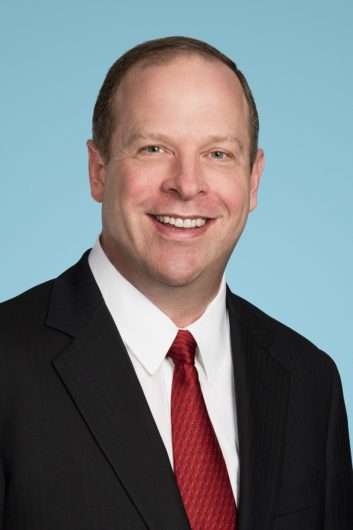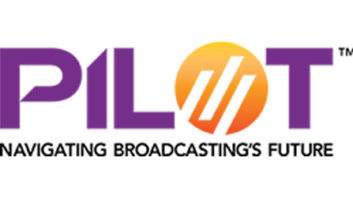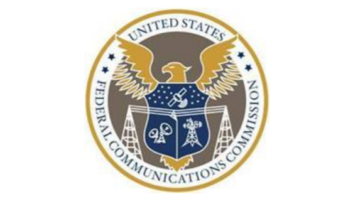
This story has been updated with new information.
There will soon be more signals on the lower part of the FM band in the United States.
While 5G seems to be the recent focus of Federal Communications Commission spectrum allocation activities, a new filing window for the noncommercial educational service is coming next year.
Over a decade has passed since the FCC accepted applications for new full-power NCE construction permits. The window will allow non-profit organizations, schools and native tribes to apply for original CPs in the NCE reserved band, which is 88.1–91.9 MHz on the FM dial. Individuals cannot apply for NCEs.
But the commission will not accept applications proposing major modifications to existing NCE FM stations, as an earlier version of this article said it might. An applicant seeking a major mod to an existing NCE FM station authorization would have to apply for a new station instead to replace the old license.
Observers do expect that a window for additional low-power FM stations will follow (see sidebar at bottom of this story).
Coming soon
Chairman Ajit Pai, responding to a congressional inquiry this summer, signaled the commission’s intent to open a full-power NCE window in early 2021.
“Staff anticipates that the new NCE FM window will be opened after our new processing rules for this service are effective later this year,” Pai wrote in a letter to Rep. Xochitl Torres Small (D-N.M.) Subsequent to the original posting of this article, the FCC announced it does plan that window in 2021, though it hasn’t set the dates yet, and also said it plans a 10-application cap per entity. It asked for comments on that plan.
Contacted for comment about possible expansion in the number of stations at the left end of the band, National Public Radio said it is always “supportive of opportunities to expand station services when they are presented.”
Observers say most opportunities for new NCE stations would be in less populous parts of the country, considering the number of signals already squeezed into the band where there are more potential listeners.
By the numbers
The number of FM educational stations has almost doubled in two decades, from 2,140 in the year 2000 to just under 4,200 at the most recent FCC count.
The number of commercial FMs increased at a much slower rate, from roughly 5,900 to about 6,700. The category of FM translators and boosters grew prodigiously, from about 3,250 to 8,300; and LPFMs, which didn’t exist before the beginning of this century, now total 2,146 licenses.
The NCE service has not had a window for new applications since 2010, according to the FCC, and that one involved a limited number of existing vacant allotments.
A 2007 NCE window yielded approximately 3,600 applications, of which about 2,700 were mutually exclusive, meaning applications involved geographic or spectral overlap. The FCC in that round granted approximately 1,330 CPs for new NCE service, according to commission data.
There’s no way to know yet how many new NCE licenses the commission might eventually award since it does not identify potential slots. Typically, an applicant identifies a spectrum opening on a certain frequency and names a transmitter site, power and antenna height to fit that spectrum availability.
New processing rules
The commission in late 2019 revised certain rules for processing NCE applications; the measures are intended to simplify and improve selection and licensing and clarify procedures for choosing among mutually exclusive applications.
The changes dealt with specifics such as divestiture pledges and amendments to the governing documents of applicants who claim certain MX point classifications. The FCC also will revise the application form to require each applicant to certify that it has reasonable assurance of availability of its proposed transmitter site.
The FCC included all of the changes to the NCE and LPFM processing rules, including rules governing major tie-breakers for mutually exclusive applications, in a Report and Order in MB Docket No. 19-3 issued last December.
The resolution of competing claims is an important part of the process whenever a new station window opens.
The commission places conflicting applications into MX groups before applying internal processing; it then selects one application for grant from each separate MX group. A point system is applied to each application based on public interest criteria (such as diversity of ownership, localism or technical superiority) and the application with the most points in an MX group is the tentative selectee.
The commission recently dismissed a challenge to the NCE MX process. Law firm Discount Legal had argued that the FCC should set up a secondary grant policy for MX groups, essentially naming “runner-up” applications, but it was unsuccessful.
“No new additional changes to the NCE processing rules are expected before opening a window next year,” the FCC spokesperson said.
Nitty gritty
Applicants in the filing window must propose a facility that meets at least the minimum for a Class A FM station, which is 100 watts (0.1 kW) at 30 meters height above average terrain. Facilities proposed may be up to 50 kW for a Class B or 100 kW for a Class C depending on the proposed station location.
Noncommercial educational FM stations protect all other reserved band full-service stations using contour overlap on co-, first-, second- and third-adjacent channels. However, reserved band stations are not required to protect existing LPFM and FM translator stations.
The FCC expects any new NCE window would be open for one week.
As for when exactly that might be, the commission typically gives several months’ notice of any filing window for new station applications.
One observer, communications law attorney Dan Alpert, said the timing of the filing window is discretionary on the part of the FCC but guided by the winds of political pressure. But he said the window is likely to come while there are still economic unknowns caused by the pandemic.
“There may be fewer parties out there who can afford the time and expense to develop engineering proposals that would be necessary for an NCE filing,” Alpert said.
These filings would not involve a filing fee, he said, since these are for non-commercial facilities in the non-commercial reserved band. “However, there will be substantial costs involved pertaining to engineering and legal analysis.”
The 2007 NCE window limited applicants to a total of 10 applications nationwide. As noted above, the FCC now has announced it again plans such a cap to avoid huge numbers of applications that would be difficult to process and could lead to daisy chains of competing applicants; it is taking comments on that plan.
The FCC spokesperson also noted that many applicants typically are disqualified because they didn’t pay sufficient attention to the filing requirements.
“Our rules spell out in detail our procedures for processing applications for new NCE stations. Those rules provide potential applicants with guidance about what factors will be taken into account to resolve any mutual exclusivity among applicants, and how to resolve mutual exclusivity.”
“Incredibly Crowded”
While the FM band has become quite busy in the 21st century, congestion and interference are generally viewed as greater issues higher up the dial. But that doesn’t mean there are a lot of tasty NCE market opportunities waiting to be discovered, either.
John Garziglia, communications law attorney for Womble Bond Dickinson, expects most new full service NCE licenses will be awarded outside major urban areas.
“The FM band in most areas of the country is already incredibly crowded. It is unlikely that applicants will find either full-power NCE or LPFM opportunities in most non-rural areas. In rural areas, there will be significant availabilities for both new NCE and LPFM stations,” Garziglia said.
Garziglia expects the application processing would take at least a year, which could delay the opening of the LPFM filing window.
“If the FCC opens an LPFM window prior to the almost-complete processing of NCE applications, there is the risk that spectrum space specified by NCE applications that will later be dismissed or denied will foreclose availabilities of LPFM spectrum,” Garziglia said. “So, there may be a significant detriment to LPFM applicants if the FCC does not await a full processing of NCE applications prior to opening an LPFM window.”
Matt McCormick, co-managing member of Fletcher, Heald & Hildreth, said groups hoping to apply for an NCE license should use the next few months to select knowledgeable consulting engineers and a communications attorney familiar with the NCE selection process.
“There are too many traps for the unwary for an applicant to try to weave its way through the process without a lawyer,” he said.
“The third step is to make sure the applicant’s corporate paperwork in up to date with the appropriate state office, which is the secretary of state’s office in most states.”
McCormick said applicants need to submit the strongest application possible and assume that mutually exclusive applications will be filed; and they should propose technical facilities serving populations that currently have no or only one NCE radio service.
Should interested parties wait for the expected LPFM opportunity?
“Frankly, I think that any non-profit group that wants to get into radio should file in this window,” he said. “If it wants to reach a relatively large geographic area, it can do so with a full-service NCE FM, whereas the coverage of an LPFM is limited to the area it can reach with 100 watts at 30 meters above average terrain.”
In addition, even if a non-profit plans to operate with a low power level at first, a full-service NCE license may allow it to increase power later.
“Moreover, if the group is not successful in getting a full-service NCE FM through this window, it can always file for an LPFM during the window that will follow.”
For those selected to receive new full-service NCE construction permits, the costs involved in building and operating a radio station can be substantial.
REC Networks, a consultancy that is active in the non-profit and LPFM sector, estimates $3,000 to $30,000 for a transmitter to get started, depending on the situation. Antenna size and cost also will vary based on power level, with a simple non-directional antenna at lower power (250 watts or less) around $700 to start, but higher-power and directional antennas, especially those with a custom design, can be far more costly.
New NCE stations are also required to install an Emergency Alert System encoder/decoder, REC notes.
Sidebar: What About LPFM?

An entity eager to apply for a low-power FM license may get an opportunity to apply for one once the FCC completes work on its NCE filing window. LPFMs operate under noncommercial educational broadcasting rules as well.
An FCC spokesperson says the commission doesn’t have a specific date “but we anticipate that will be a priority” once the next window for full-power NCEs is done.
“We want to avoid the situation where we issue new LPFM permits that are subsequently knocked out by new primary NCE stations.”
Some observers think an LPFM filing window could come in late 2021 or early 2022.
The LPFM service was launched in January 2000. LPFM stations are limited to 100 watts effective radiated power. There are 2,146 licenses as of the most recent FCC count. New LPFM applicants would be allowed to apply for one license, according to the FCC.
Scott Flick, a partner at Pillsbury Winthrop Shaw Pittman, answered questions from Radio World.
Radio World: How should non-profit groups prepare for the next LPFM filing window?
Scott Flick: In terms of preparation, there is no substitute for reviewing the application form used for this purpose by the FCC (Form 318) to see if the applicant can supply the requested information and make the required certifications, or needs to take further steps to be able to do so.
And of course, the applicant needs to make sure that it is the type of entity that can even qualify to apply for an LPFM authorization in the first place. The requirements are narrower than most people realize, and can be found in Section 73.853 of the FCC’s rules. The applicant must also be local to the station service area and, with some exceptions, can’t have an interest in other broadcast stations.
RW: What kinds of things often trip up LPFM hopefuls?
Flick: Common problems LPFM applicants have in the planning process include failing to secure the rights to their proposed antenna site — lease negotiations fall through — or discovering that they need to deal with local zoning authorities to be able to use their proposed site.
There is also a pretty long list of FCC rules applicable to LPFM, which can be found in Section 73.801, and applicants should ensure they are familiar with all of them. They also need to be thinking about how they will supply a continuous stream of content to feed the station, as, for example, LPFM stations are prohibited from retransmitting the signal of a full-power station, along with other types of content.
RW: How about the finances?
Flick: Of course the biggest issue is having a viable business plan in place. Since LPFM stations have to be operated non-commercially, it’s particularly important to have worked through how the station will cover the costs of its operation and what those costs will be. Many people underestimate the costs involved and then struggle to stay on air. Operating an LPFM successfully means being able to deal with occasional unexpected expenses.
For example, since LPFM stations are subject to interference objections from full-power stations, an LPFM operator may suddenly find itself having to modify its engineering operations to eliminate interference, or even having to locate a new channel to operate on in extreme cases. Having a budget in place that can withstand the costs of equipment modifications or replacement is a wise move.
RW: Any final tips for potential LPFM licensees?
Flick: It’s worth noting that applying for an LPFM station and getting an authorization to operate one are not the same thing. If the application is incomplete or incorrect, the FCC may reject it out of hand. If the application is perfect in every way, the applicant may still not get a license because other applicants applied during the same filing window for facilities that are mutually exclusive with that application.
In that case, the FCC has processes in place to decide who gets the license, and in some cases, may encourage parties to share the license. As a result, parties should be careful about spending money or making commitments for leases or the like until they know they have a construction permit in hand.
Of course, they need to make sure all equipment meets FCC requirements, as there are plenty of FCC enforcement actions out there against stations that tried to use whatever equipment they could lay their hands on rather than what is required by their FCC authorization, particularly after an equipment failure.
Comment on this or any story. Email [email protected] with “Letter to the Editor” in the subject field.












